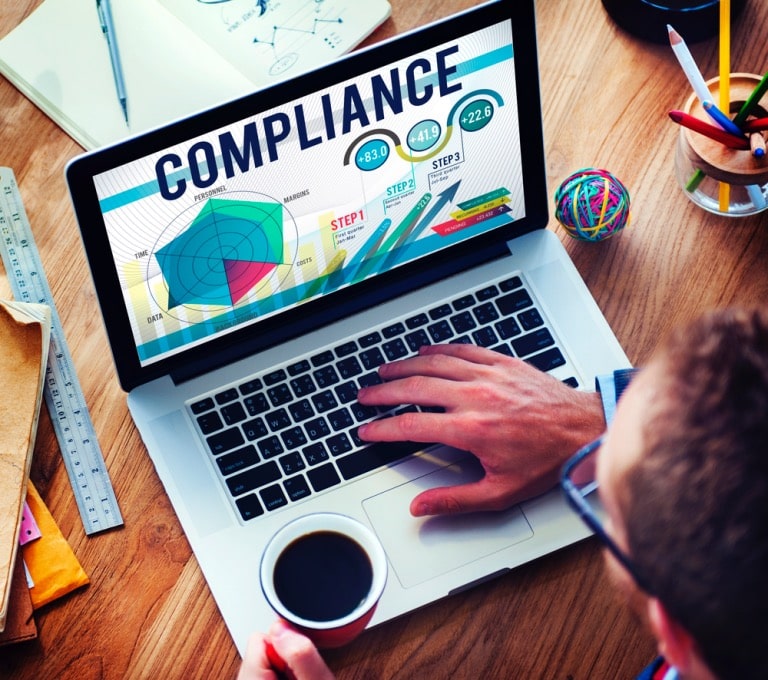Simplifying Risk and Compliance: Strategies for Your Organization’s Success

Risk and compliance might sound like two of the least exciting words in business, but they’re the backbone of a successful organization. Why? Because they protect you from a world of hurt—from financial penalties to reputational damage. Yet, managing them can feel like climbing a mountain with a boulder on your back.
This article breaks down how to make risk and compliance in Governance frameworks a whole lot easier. Ready to transform these tedious tasks into an organized and efficient process? Let’s get started.
The Importance of an Integrated Risk Management Approach
Imagine if each department in your organization managed its own risks and compliance measures independently. Chaos, right? An integrated approach means you have a centralized view of risk across all areas of your business.
An integrated approach ensures that everyone works from the same playbook. Not only does this save time, but it also reduces the chances of gaps in your strategy. So, think of integration as your new best friend.
Identifying Key Compliance Requirements for Your Industry
Every industry has unique compliance requirements. For example, healthcare organizations deal with HIPAA regulations, while financial services must adhere to PCI-DSS. Knowing what’s essential for your industry is crucial. Conducting regular reviews of industry-specific regulations helps you stay compliant and avoid nasty surprises. Consider it as the baseline of your compliance framework.
Developing a Compliance Framework Aligned with Your Goals
A compliance framework is essentially your roadmap. But instead of being generic, align it with your company’s goals. Are you aware of the specific risks your organization faces? What regulations are most pertinent?
By tailoring your compliance framework to fit your unique business objectives, you create a system that’s not only efficient but also effective. The framework becomes a living, breathing part of your organization.
Streamlining Your Risk Assessment Process
Think of risk assessment as your organization’s health check-up. But rather than a lengthy, painful process, it should be streamlined and efficient. Start by defining the scope—identify the areas most critical to your business.
Next, assess the probability and impact of each potential risk. Then, prioritize. By breaking it down into manageable steps, risk assessment becomes less of a burden and more of a proactive strategy.
Automating Compliance and Risk Monitoring
By using software solutions to monitor compliance and risk, you free up time, reduce errors, and gain a real-time understanding of your organization’s status. Automation keeps an eye on changes in regulations, notifies you of potential breaches, and continuously evaluates risk. This is not about replacing people—it’s about giving your team the tools they need to work smarter.
The Role of Centralized Data in Risk Management
Imagine trying to manage risks with scattered data. Not fun, right? Centralized data means you have a single source of truth that is accessible to everyone involved in risk management and compliance. This makes reporting, monitoring, and decision-making easier. Centralized data allows your organization to be nimble and well-informed, adapting to changes quickly and efficiently.
Building an Effective Risk Mitigation Strategy
Mitigating risk means preparing for the inevitable. Whether it’s financial risk, operational risk, or regulatory risk, the key is having a strategy in place. Start by identifying the specific risks that pose the greatest threat to your organization.
Then, determine the controls you can put in place to reduce those risks. This strategy should be documented, reviewed, and updated regularly. Remember, a good risk mitigation plan is proactive, not reactive.
Managing Third-Party Risk Efficiently
Every organization relies on third-party vendors, but with partnerships come risks. Each vendor relationship has the potential to expose your organization to vulnerabilities. A structured approach to third-party risk management includes vendor assessments, ongoing monitoring, and performance reviews. By understanding the risks associated with your vendors, you can make informed choices and reduce your exposure to third-party risks.
Improving Audit Preparedness and Documentation
Audits are rarely fun, but they’re a necessity. The secret to a smooth audit is preparation. Keep thorough records, implement regular self-assessments, and document your processes.
A well-prepared organization can reduce the time and resources needed for an audit and demonstrate its compliance posture confidently. Remember, audits are not about catching mistakes—they’re about verifying the strength of your controls.
Creating a Culture of Compliance Across Your Organization
Compliance isn’t just the job of a single department; it’s everyone’s responsibility. To build a culture of compliance, make it a part of your organization’s DNA. Educate employees on the importance of compliance, recognize and reward good practices, and lead by example. A culture of compliance reduces risk and enhances your organization’s reputation—every employee becomes a compliance advocate.
Utilizing Advanced Analytics for Risk Prediction
Advanced analytics is like having a crystal ball for risk management. By analyzing historical data and current trends, you can predict potential risks before they become problems. These insights enable proactive measures, giving you a competitive edge. With predictive analytics, you’re no longer just responding to risks—you’re staying a step ahead of them.
The Benefits of Continuous Compliance Improvement
Compliance isn’t a one-and-done task. Continuous improvement means regularly evaluating and refining your processes. Regular updates ensure you’re not just meeting minimum standards but exceeding them.
By investing in a cycle of continuous improvement, you enhance your organization’s resilience and agility, better prepared to navigate an ever-changing regulatory landscape.
How Compliance Software Can Simplify Your Risk Management
With the right software solution, you can streamline risk and compliance efforts. A software platform can centralize all aspects of risk management, automating repetitive tasks and offering real-time insights.
These tools can provide you with dashboards, alerts, and reports that make managing risk as easy as checking your email. The right solution brings clarity and efficiency, allowing you to focus on growth rather than getting lost in paperwork.
Choosing the Right Compliance Software for Your Organization’s Needs
Not all compliance software is created equal. Start by evaluating your specific needs: What are your primary compliance requirements? What features are essential for your organization?
Whether it’s customization, scalability, or integration capabilities, your ideal software should align with your goals and support your unique challenges. Take your time to research and choose a solution that fits seamlessly into your organization’s ecosystem.
Conclusion
Simplifying risk and compliance for Governance frameworks doesn’t have to be an uphill battle. With a clear strategy, the right tools, and a commitment to continuous improvement, your organization can turn risk management into a streamlined, efficient process. Remember, it’s not just about avoiding fines—it’s about building a stronger, more resilient business. Your success depends on it, so make risk and compliance a priority today.




